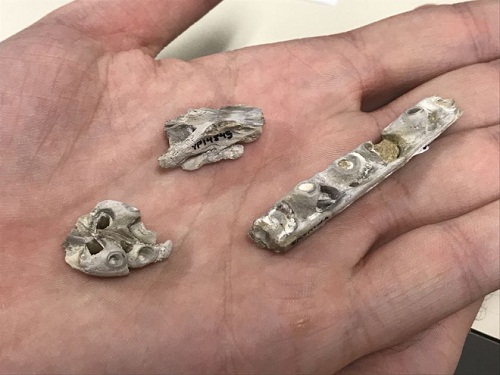University of Alberta (UA) paleontologists have helped identify the fossil of an ancient baby sea monster discovered in Kansas, United States. According to researchers, this fossil is about 85 million years old, and belongs to a newborn Tylosaurus that died shortly after its birth. At the time of its death, it had not developed the characteristic snout and teeth found in an adult Tylosaurus.
Takuya Konishi, the lead author of the study and UA alumnus, revealed that he had first looked at this specimen in 2004. However, it took him about 10 years “to think outside the box and realize what it really was—a baby Tylosaurus yet to develop a snout.”
Takuya Konishi, now a faculty member at the University of Cincinnati, told CBC that when he saw another monasaur specimen, he realized that the unidentified fossil could be that of a baby Tylosaurus.
“Certain bones just looked very similar among baby mosasaurs,” he told CBC.
“It’s kind of a story about the ugly duckling. It wasn’t a graceful swan yet, it looks like a strange looking duckling.”
Tylosaurus were large monasaurs that lived in oceans millions of years ago. An adult predatory reptile could grow up to 13 meters in length—bigger than killer whales of today.
“This is a lizard, so [like] Kimodo dragons or snakes we have today, it’s the same kind of scaly reptile,” said Konishi.
“It’s basically a sea-going lizard with big flippers and big shark like tail fin.”
“We have known for some time that these remains were the rarest of the rare — babies or just freshly born sea monsters,” said U of A biological sciences professor Michael Caldwell, co-author on the study.
“I consider this to be success of the finest kind. Great science, great students, and careers made at the same time,” he added.
The detailed findings of the study have been published in the Journal of Vertebrate Paleontology.


